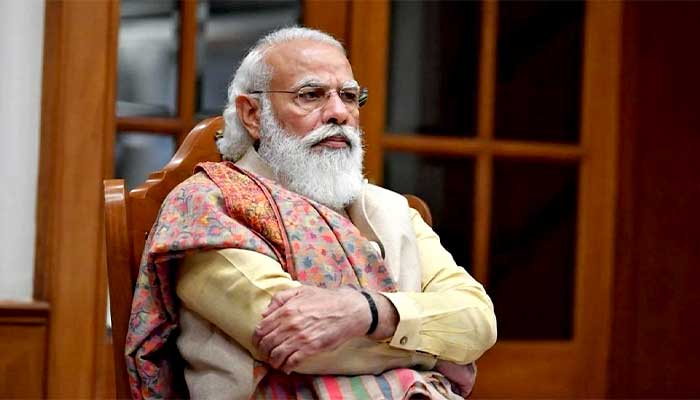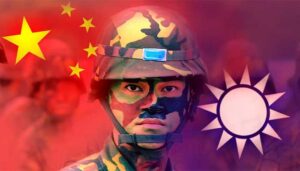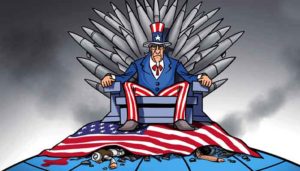Most analysts especially imbued with liberal economics and anti-Chinese thinking predicts that India under the able leadership of Prime Minister Narendra Modi within a span of few years India will easily overtake China not only economically but also militarily. They hail the admission of India into the defense and military coalition with Quad in partnership with U S, Japan and Australia to contain and thwart the military and economic might of China. Rapidly developing democratic India will be a bulwark against the Chinese dictatorship which will greatly strengthen the ”Free world” they assume.
But reading the monumental book (nearly 600 pages) Price of the Modi Years by Aakar Patel leave one flabbergasted and disoriented unable to distinguish rhetoric from reality. Of course what the critique Patel so brilliantly and scholarly describing in the book not came out of blue. Some of these facts came out to public domain at the time when Modi with his forceful narrative caught and conquered the Indian public opinion. But it did not caught attention of unsuspected voters. How Modi juggernaut crush all these suspicions and vacillation relentlessly amply demonstrated by winning handsomely U P and few other states in recently concluded state elections.
![2022april27[2]__quad](https://vivaranalk.com/wp-content/uploads/2022april272__quad.jpg)
What actually Modi phenomena achieved for ‘Mother India’ since 2014 when he entered Lok Sabha sending Nehru dynasty and the Indian Congress into a spin still to recover? Why his critiques and the political opposition still unable to come up with a reliable and dependable alternative to counter his politics?
Aaker Patel gives no answers to these questions. But he examines, analyzes and postulates Modi’s political thinking and manipulations clearly and succinctly so the reader can draw his own conclusions about the precarious situation India facing under his leadership.
What Modi who won the election in 2014 promising so many things to gullible voters achieved during this period? India’s ranking in 53 indices including Food sustainability, Sustainable development and Economic Forum Human Capital have gone down compared with earlier years performances Patel explained. Most strikingly India achieved the ignominious position of No. 1 in being the most dangerous country for women in the world.
Another indicator is the availability of basic needs at affordable prices for the poor. Spending on foods by the poorest Indian declined compared with 2011-12 in 2018 before the pandemic. Even the employment has gone down under the Modi administration.
”Joblessness rose consistently under Modi. The total numbers of Indians with work shrank under Modi from 44 crore in 2013 to 41crore in 2016 to 40 crore in 2017 then to 38 crore in 2021, though the workforce grew from 79 crore to 106 crore (pages 46-47)
Labour force participation rate according to the World bank had fallen in India from 51.4 percent in 2014 to 46.2 percent in 2020 says Patel. He further explains that the actual figure in 2020 is even lower at 40.7 percent.
Under the demonetization exercise implemented under the direction of Modi abolished 86% of India’s currency. The objective was to stamp out terrorism and corruption. Rs. 500 and Rs. 1000 notes account for 85-90% of circulation of all currencies. These high value notes mainly used to finance corrupt practices and terrorism Modi opined. By abolishing them the country will free itself from corruption and terrorism Modi argued. But after the demonetization he introduced Rs. 2000 note which will benefit corruption and terrorism according to his earlier postulation.
This is one clear example of policy bungling under Modi administration.
Another tactics used by Modi to boost his public standing is the manipulation of statics to highlight his achievements. To illustrate this point it is suffice to present the comments made by a former governor of Reserve Bank of India, Y V Reddy. ‘everywhere in the world the future is uncertain. But in India even the past is uncertain’. This was always the case with the Modi government.
Figures presented by Modi Government to substantiate astronomical growth under his direction do not always tally with the real drivers of the economy Patel shows.
”In 2015–17, India claimed to have posted average real GDP growth of 7.5 per cent, though the government’s other figures showed that investment growth was only 4.5 per cent, exports growth 2 per cent, and the credit to GDP ratio fell by 2 per cent. Subramanian looked at how many emerging market nations between 1991 and 2015 had hit 7.5 per cent growth with India’s combination of investment, export and credit growth. The answer was zero. Countries with performance on those indicators similar to India’s had not even managed average real GDP growth of 5 per cent.” (page115)
Modi thinks that his personalized style of government will achieve results even in the complicated and nuance field of foreign relations. Modi visited China four times as the Chief Minister of Gujarat and five times as the prime minister but it did not help at least to establish cordial relationships between the two countries. Modi’s assumption is that decades old issues can be resolved by personal understanding proved fatal when the Chinese army surreptitiously entered the disputed borders in Ladakh. Similarly Modi attended the wedding of then Prime Minister of Pakistan Nawaz Sharif’s granddaughter’s wedding as a mark of goodwill and close relationship with Pakistan. But these personal relationships proved nothing when attacks on Pathankot, Uri and Pulwana took place.
Under the chapter Bad Muslims Patel painstakingly illustrate how the religious minorities especially Muslims are subject to various sorts of harassment, torture and discrimination some of them amount to genocide. The tragedy is that the news of lynching and other form of violence are not given prominence in Indian or in international media.
‘It is the nature of the media to demote stories that become commonplace because they are no longer ‘news’. When the lynching and assault of Muslims for their faith and culture first begins to happen, it is a national and perhaps even an international story. In time, other stories come to the front page and the assault and lynching incidents begin to recede into the back pages. They are no longer prominent and no longer noticed. Violence and hatred against Muslims became normalised under Modi. (page 242)
Under Modi’s administration Muslims were told by judiciary that their religion is a provocation and in consequence three RSS workers who killed a Muslim youth were given bail. Even the Muslims who visited temples as an act of religious harmony were arrested for spreading communal hatred. Patel documented long list of incidences where Muslims were discriminated harassed and prosecuted because of their religion.
When oppressed people found no legal or administrative avenues to seek justice and redress they resorted to novel ways to protest. When Dalits were beaten, tortured and killed in some instances for skinning dead cows Dalits of Surendranagar of Gujarat brought 15 truck loads of dead cows to the office of provincial Collectorate and dumped them saying ‘she is your mother. Take care of her’. Ultimately Collectorate had to bury the carcasses at its expense.
Modi’s government habitually overlook or treat with contempt the complaints made by victims of harassment or torture. To protest against this attitude Manipuri women who were subjected to sexual assault by Indian forces appeared naked before the headquarters of Assam Rifles in Imphal with banners reading ‘Indian Army rape us’.
For protests to be successful they have to be sustained.
” If the State is not interested in the issue, or has a stake in the issue or is hostile to the protestors, the only way to draw its attention and hold it is through sustained defiance. The State, especially a governmentsuch as Modi’s, understands the news cycle and can deflect, distract or ignore for long enough for the issue to die down due to a lack of enthusiasm, organisational ability or just stamina. (page 522)
‘Protests are the only ways for oppressed Indians get some sort of riddance. ‘If they ( Muslims) did not stand up for their rights, they would be brutalised while the others looked on. They chose to make a stand in a spontaneous movement that defined Modi’s second term, gave Indians hope and a model for peaceful resistance, drew the admiration of the world and, most importantly, finished off the idea of a nationwide NRC, making Amit Shah eat his words.’ (page 528)
Another instance where Modi had to retract is when Punjabi farmers protested against his farm laws. He had to withdraw three farm laws which he boasted as a modernization of Indian agriculture.
Aakar Patel’s Price of the Modi years a must read not only to get a close up view of India but also to understand the current political scene in Sri Lanka.
- ලැබුණු ජනවරම ජනතා සුභ සිද්ධය සඳහා යෙදවීමට නම්.. - April 11, 2025
- බටලන්දෙන් ඇවිළෙන ගිනිදැල් නිවෙන්නේ කෙසේද? - April 1, 2025
- අධිකරණයටත් ආරක්ෂාව නැති විට ජාතියට ඇති ආරක්ෂාව කුමක් ද? - March 8, 2025





